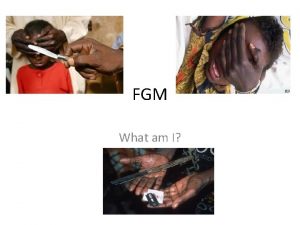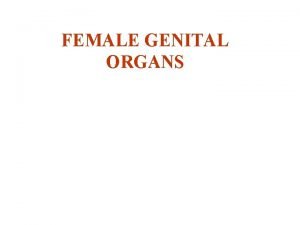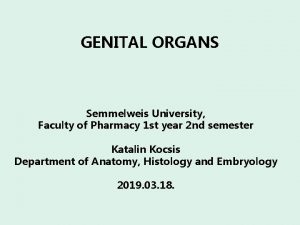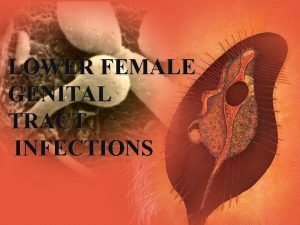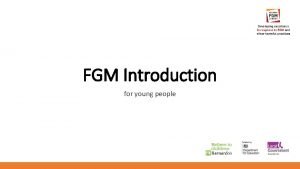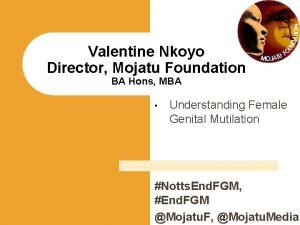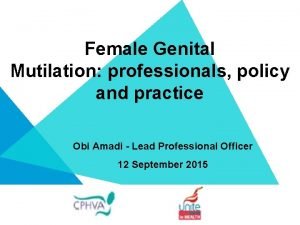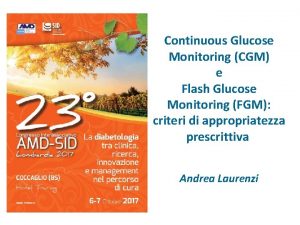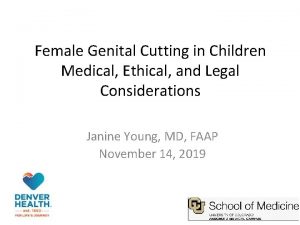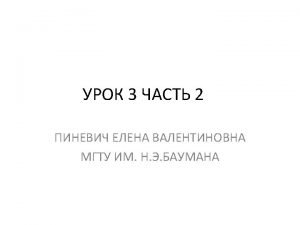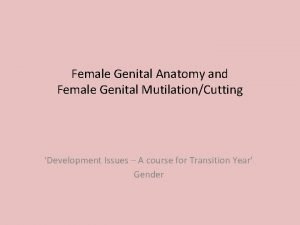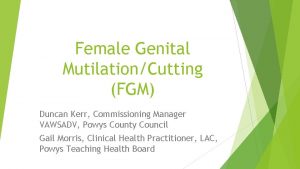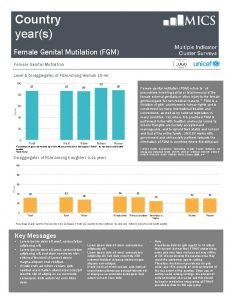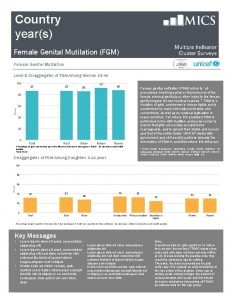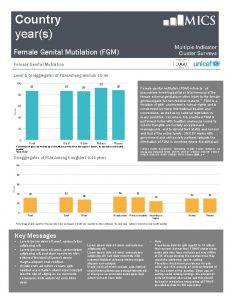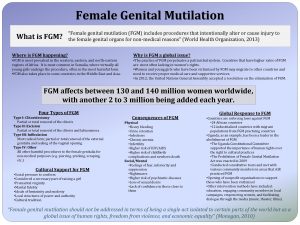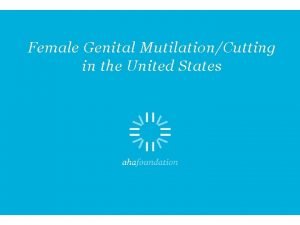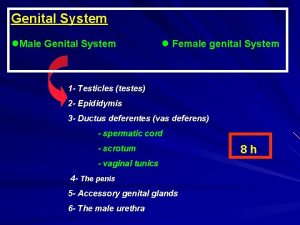Female Genital MutilationCutting What FGM Female Genital MutilationCutting











- Slides: 11

Female Genital Mutilation/Cutting

What? • FGM. Female Genital Mutilation/Cutting comprises all procedures that involve partial or total removal of the external female genitalia, or other injury to the female genital organs for non-medical reasons (WHO). It has no health benefits and harms women in many ways. It is also sometimes referred to as female genital cutting or female circumcision.

Principles of Policy • Safety & welfare of child paramount • All agencies act in the interests of the rights of the child (UN convention 1989) • FGM/C is illegal in the UK • Not to be left to be decided by personal preference – extremely harmful practice • Professionals not fear branded as ‘racist’ or ‘discriminatory’ weakens protection & support

Principles • Accessible, acceptable and sensitive health education, police, social care and voluntary sector services underpin interventions. • Acknowledge some FGM practicing families do not see as an act of abuse. • Often embedded ‘cultural practice’ requires engagement with families and communities to achieve a long-term abandonment and eradication of GFM/C

Principles • Decisions , plans based on quality assessments – Sensitive to issues of race, culture, gender, religion and sexuality – Avoid stigmatising girl/woman affected – Avoid stigmatising practising community as far as possible

Royal London • Partnership working with foundation for care and management of FGM/C • Sensitive questioning • Cultural awareness • Emotional support • No blame • Supporting change within local communities

Partnership working • • • Assessing risk of FGM/C occurrence Preventing harm Negate multiple referrals to different agencies Prevent unnecessary social care involvement Assessment of FGM/C – Degree – Referral for de-infibulation – Identify urinary tract problems and refer • Psychological assessment – referral to PMHT • Peer Support – attendance at Sylvia Pankhurst for de-infibulation

MDT • • • Named FGM social care worker Midwife Tower Hamlets FGM project co-ordinator Dr. Janet Barter Named Obstetrician

What’s next? • Develop ‘One Stop Appointment’ • Develop MDT – Midwives trained to perform de-infibulation – GP referral to service • Normalise reversal of FGM/C • Prevent FGM/C!

Type 4 • Don’t forget to ask about Piercings! – Labial piercings- rings , studs and chains – Clitoral rings or studs – Perineal disks • Don’t forget to look! • Anyone could have one or more!

Thank you https: //fgmelearning. vctms. co. uk
